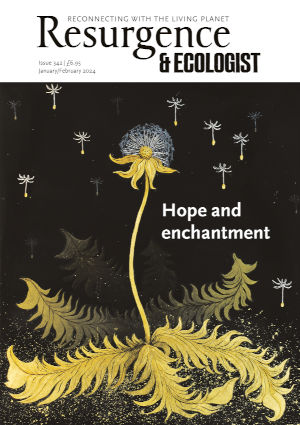Deep within the Boreal Forest, Fort McMurray is the fourth-largest settlement in Alberta. It is a town that owes its existence to the tar sands, with workers lured from across the country to extract and refine what is both a mainstay of the Canadian economy, and the most carbon-intensive fuel on the planet. During the first week of May 2016, a wildfire, seeded in the forest surrounding it, ripped through the community. More than 2,500 homes were destroyed and almost 100,000 people were evacuated. At an estimated cost of C$9.9 billion, it was the most expensive disaster to date in Canadian history.
There is a moment in John Vaillant’s forensic examination of this event when he describes the temperature in Fort McMurray at certain times during those days as equivalent to the surface of Venus. This is not an exaggeration. What Vaillant achieves so powerfully is to make us understand that the fires that we are now living with – the product of drought conditions, record temperatures and desert-like humidity – are not the fires that came before. “This is not planet Earth as we found it,” he writes. Wildfires in the 21st century burn so hot that they evaporate the water used to dowse them. A wildfire is capable of generating its own weather systems – tornadoes, lightning, and hurricane force winds – and plumes of smoke that reach the stratosphere. It consumes an entire house in five minutes. It is fire that we no longer know how to cope with.
It is not lost on Vaillant that it was here, at oil’s source, that oil’s legacy has come to pass. “When it comes to rapidly and radically altering a landscape along with the lives of those who live upon it, only a few things compare to a big boreal fire,” he writes, “and one of those is the profit motive.” There is a strong parallel to be drawn between the rapaciousness of wildfire and that of free market capitalism. He depicts us as a species in thrall to fire: a fire cult with our combustion engines, our boilers and our power stations, sparking billions of flames a day. And, Prometheus-like, we are rapidly losing control of the power we hitherto believed we had harnessed.
Alongside this, Vaillant narrates the growth in climate science over the past two centuries. How we came to understand the atmosphere, and how already by the 1950s the links between carbon dioxide, global heating and the burning of fossil fuels were there to see for anyone who would listen. There are brave individuals throughout this book, both those who have battled against powerful currents to have the science understood, and those who made a stand in Fort McMurray to save what they could from the flames. But thus far these are losing battles. One evacuee observes that, with the familiar landmarks razed to the ground, he no longer knows how to navigate his city, the place he once called home. In his previous best-selling book, The Tiger, Vaillant details the hunt for a man-eating tiger in Russia’s Far East. Once again, we are being stalked by something that comes out of the forest, a terror that now appears to be far outside our control.
Fire Weather: A True Story from a Hotter World by John Vaillant. Sceptre, 2023. ISBN: 9781399720199.
John Vaillant was awarded the 2023 Baillie Gifford Prize for Non-fiction for Fire Weather.







